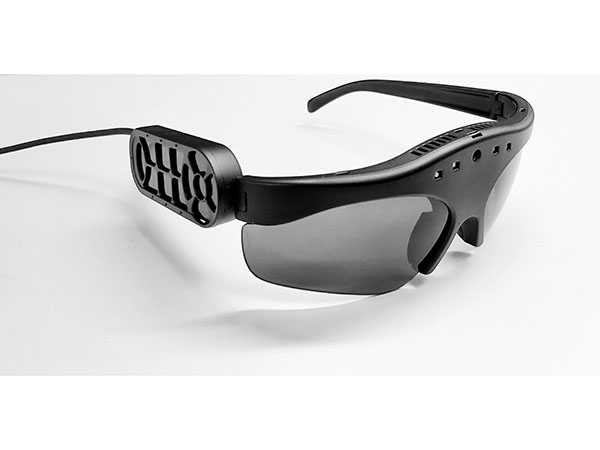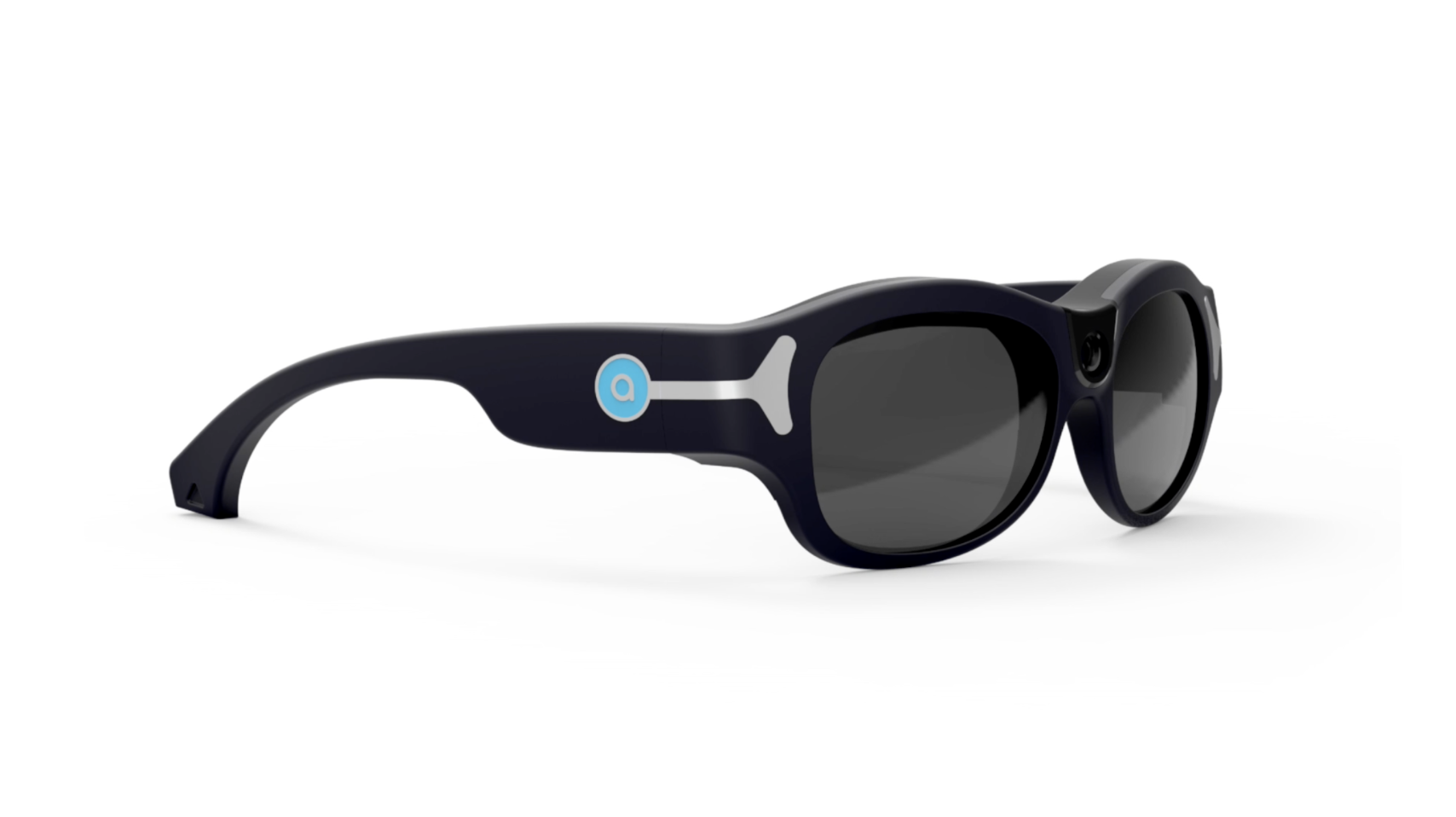Discover Advanced Assistive Gadgets for Individuals With Aesthetic Impairments
The landscape of assistive modern technology for individuals with visual disabilities is advancing rapidly, providing a series of ingenious devices that improve freedom and interaction (Braille displays and notetakers). From clever glasses that perfectly combine visual input with auditory assistance to innovative navigation applications that redefine spatial recognition, these devices are reshaping opportunities. The newest improvements in Braille modern technology and voice-activated systems substantially contribute to availability. Nonetheless, the implications of these advancements expand much past mere performance; they test traditional understandings of handicap and independence. What might this mean for the future of inclusion and assistance?
Smart Glasses Innovations
Smart glasses stand for a substantial innovation in assistive innovation for people with aesthetic impairments. Geared up with video cameras and sensors, clever glasses can record real-time visual information, which is then refined and shared to the individual with audio feedback or haptic feelings.
Moreover, developments in synthetic knowledge have actually additionally improved the capabilities of smart glasses. Artificial intelligence algorithms can acknowledge faces, reviewed text, and recognize objects, making them important tools for everyday tasks. Customers can receive auditory signs that supply context about their setting, fostering independence and confidence.
In addition, the ergonomic design and lightweight nature of several smart glasses make them appropriate for long term usage, guaranteeing comfort while improving capability. As these devices remain to progress, they hold the possible to revolutionize the way individuals with visual disabilities experience their day-to-days live, bridging the space between availability and modern technology. The ongoing r & d in this field promise to increase the possibilities for smart glasses, making them a necessary part of contemporary assistive gadgets.
Navigating Application and Equipment
Countless navigating applications and devices have actually become necessary resources for people with aesthetic impairments, considerably improving their capacity to traverse unfamiliar atmospheres. These modern technologies utilize GPS performance, audio signs, and real-time information to give customers with precise navigating help.
One prominent instance is the Aira app, which links customers to qualified agents that can supply visual descriptions of environments and navigation support via a live video feed. This service enhances the individual's spatial understanding and self-confidence while browsing. Another significant tool is Seeing Eye GPS, which provides voice-guided navigating and sights, making it possible for individuals to access vital information about their environments.

As innovation continues to advancement, the development of much more advanced navigation devices promises to additional equip people with aesthetic impairments, promoting smooth wheelchair and combination into diverse settings. Such advancements are critical in advertising a much more inclusive society.
Braille Modern Technology Improvements
Over the last few years, improvements in Braille modern technology have substantially transformed just how people with visual disabilities access details and involve with the world around them. The development of mobile Braille display screens has actually revolutionized reading by allowing customers to attach wirelessly to computers, smartphones, and tablet computers. These devices convert text into Braille in real-time, making it possible for smooth communication with digital web content.
Moreover, eye surgery clinic ingenious Braille printers have actually arised, enhancing the production of responsive products. Modern embossers are quicker and more effective, permitting the rapid production of Braille documents and instructional products. This efficiency minimizes the moment and cost connected with generating Braille sources, making them a lot more accessible to institutions and organizations.
Furthermore, the combination of Braille with various other technologies, such as artificial intelligence and machine learning, has opened up brand-new methods for personalized understanding experiences. Voice acknowledgment and synthesis technologies can match Braille, supplying a comprehensive method to info dissemination.
As the demand for inclusive education and work environment atmospheres expands, these technical developments play a crucial duty in empowering individuals with visual problems, guaranteeing they have equal access to info and possibilities in different facets of life.
Wearable Gadgets for Self-reliance
A growing range of wearable devices is improving self-reliance for people with visual disabilities, providing ingenious services that improve navigation and everyday living. Braille displays and notetakers. These tools utilize innovative modern technologies to give real-time responses and assistance, promoting freedom in different environments

Wearable innovation likewise includes smartwatches that can be configured with accessibility features, enabling customers to obtain notices, track their locations, or also require assistance with the touch of a switch. Some devices incorporate synthetic intelligence to assess the environment, offering audio summaries of nearby objects or people.
Voice-Activated Assistive Solutions
Leveraging voice-activated assistive solutions has actually transformed the landscape of support for people with aesthetic impairments, offering hands-free interaction and accessibility to a range of tasks. These innovations make use of all-natural language handling and expert system to allow individuals to execute day-to-day activities via content straightforward voice commands.

Moreover, current innovations in voice acknowledgment accuracy have actually enhanced the individual experience considerably, suiting varied accents and speech patterns. This inclusivity makes sure that more individuals can take advantage of these innovations, cultivating a higher feeling of autonomy.
Conclusion
In conclusion, the development of sophisticated assistive gadgets significantly boosts the self-reliance and lifestyle for individuals with aesthetic problems. Technologies such as smart glasses, navigating apps, Braille technology, wearable Visit Your URL gadgets, and voice-activated remedies jointly cultivate an even more inclusive environment. These innovations empower customers to navigate their environments with self-confidence and involve even more totally with the globe, ultimately advertising higher ease of access and equal chances for people facing visual challenges.
The landscape of assistive innovation for individuals with visual problems is developing swiftly, providing a variety of cutting-edge tools that enhance freedom and engagement.Smart glasses stand for a significant innovation in assistive innovation for people with visual disabilities. As these tools proceed to develop, they hold the potential to change the way individuals with visual problems experience their day-to-day lives, connecting the gap between access and technology.In recent years, innovations in Braille technology have actually substantially changed just how individuals with visual problems gain access to information and engage with the globe around them. These innovations encourage individuals to navigate their surroundings with confidence and engage even more completely with the globe, inevitably advertising greater ease of access and equivalent chances for people dealing with aesthetic difficulties.